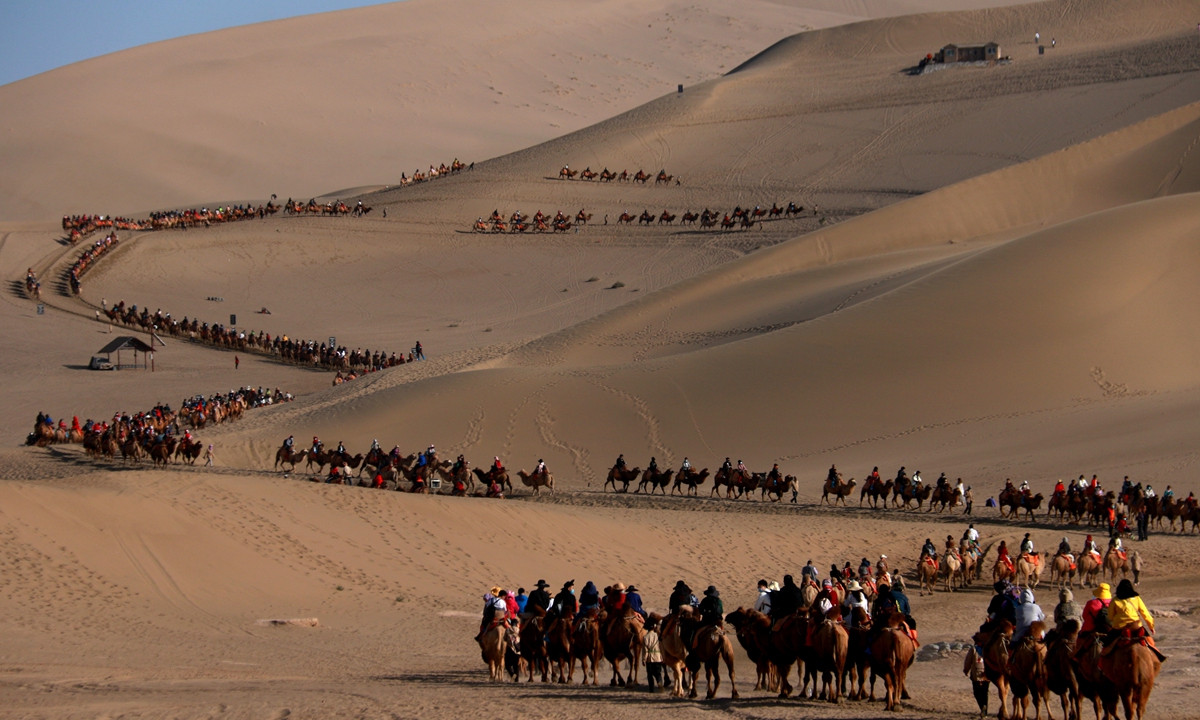ARTS / CULTURE & LEISURE
New study reveals ‘mixed-race’ individuals lived along Silk Road

Dunhuang, Northwestern China's Gansu Province Photo: VCG
Chinese researchers have unearthed evidence of "mixed-race" individuals who lived during the Wei (220-265) to Tang (618-907) dynasties in Dunhuang, Northwest China's Gansu Province, shedding light on the diverse cultural interactions along the ancient Silk Road.
Dunhuang is situated in the Hexi Corridor, which was an important route for traders to transport their wares along the ancient Silk Road. At its height, the city served as a vital hub on the road.
For the first time, archaeologists have collected 25 ancient genomic data samples obtained from the Hexi Corridor. Genetic data and historical records have unveiled extensive population migrations and blending in the region.
Notably, two individuals from the Wei period and Tang Dynasty were identified as "multi-ethnic" with genetic components indicating a blend of East and West Eurasian ancestry, ranging from 30 percent to 50 percent from the western regions of Eurasia, according to a report from the Xinhua News Agency on Wednesday.
These two individuals both exhibit a distinctive inclination toward the mixture of local males and females from the western regions of Eurasia.
"The distinctive mixture suggests they were descendants of local Dunhuang males intermarrying with 'Huji,'" said Wen Shaoqing, associate professor at Fudan University's Institute for Archaeological Science.
Huji usually refers to foreign women during the Tang Dynasty.
According to Wen, murals found in Dunhuang depict a multitude of diverse ethnicities.
Molecular archaeology corroborates that "multi-ethnic" individuals not only lived but were also buried in Dunhuang, providing tangible evidence of the ancient Silk Road's multicultural amalgamation and coexistence.
The Hexi Corridor has historically served as a vital crossroads for East-West cultural exchanges. However, the lack of ancient DNA has left a significant gap in the understanding of the region's population history. This technological archaeological breakthrough fills that void, revealing that the Hexi Corridor experienced at least two major episodes of large-scale population migration and integration over the past two millennia.
"Through comparative analysis of ancient genomes, we have reconstructed the genetic history of the Hexi Corridor's population over the past two millennia," Wen said.
This discovery also adds historical context to the poetry of renowned Tang Dynasty poet Li Bai, whose poems mention the term "Huji" frequently.
The collaborative effort between Fudan University's Institute for Archaeological Science, School of Life Sciences, and Xiamen University, along with the Gansu Provincial Institute of Cultural Relics and Archaeology, titled "Inferring the demographic history of Hexi Corridor over the past two millennia from ancient genomes" has been published in the Science Bulletin journal.

